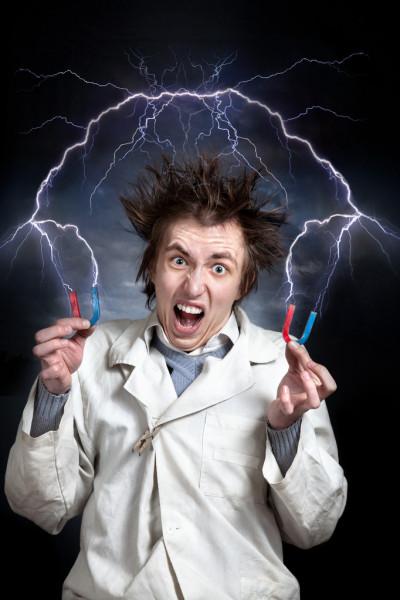
7 Mad Professors Who Appear In Escape Rooms

While being trapped in a mad scientist’s laboratory is no one’s ideal situation, finding out how their strange but genius mind works, looking at the mad concoctions they whip up and looking for ways to escape the madness is a thrilling experience.
Read on as we look at some of the most famous mad professors through history, some of which might be lurking in the shadows in your escape room. From experimenting on animals to playing with dead bodies and trying different drugs, these mad scientists have done it all.
Famous Mad Professors in History.
- Giovanni Aldini.
Believed to be one of the mad alchemists that inspired the literary phenomenon, Frankenstein, Aldini was a 19th century scientist in Europe who was known to play with electricity. Not only did he enjoy seeing the way electrocution affects humans but he was among the first to come up with the concept of shock therapy as a form of treating patients in mental asylums. Aldini once tried to resurrect a man who was executed through the use of electrodes and a battery. In front of an awestruck audience, he shocked the corpse, which started showing signs of movement, but since Aldini ran out of battery, we’ll never know if this was real or just theatrics. - Isaac Newton.
Known for discovering gravity, Newton had a somewhat eccentric side to him as well. He was known for getting completely absorbed in his research and once even poked a needle into his eye. He also had the belief that the world would end sometime in the 21st century and constantly had the apocalypse on his mind. - Johann Conrad.
Another inspiration for Mary Shelley’s Frankenstein, Conrad, was a mad alchemist who had multiple interests, including creating life in a lab, looking for the Philosopher’s Stone and even stealing corpses for his scientific experimentation. He claimed to have discovered the elixir of life, otherwise known as Dippel’s Oil (which was later found to be a hoax). His love for dissecting and experiments was not limited to human corpses and he was known for experimenting on animals as well. - Philip Zimbardo.
Known as an icon of psychology, Zimbardo is both feared and recognized for his Prison Study experiment where he placed test subjects in a fake prison setting and watched the phenomenon unfold as guards started to assume their roles to be a reality and subjected the “prisoners” to brutality. - Charles Hofling.
Hofling takes the concept of a mad scientist to another level. In his attempt to study the concept of human obedience, he had nurses administer a placebo drug to patients at a significantly higher dose than recommended. At the time, his madness was supported by the nurses who followed his plan despite the fact that it went again hospital rules. Patients beware! - Kary Mullis.
Kary Mullis was a scientist and a professor who involved his students in his activities as well. In the late 1900s, when LSDs were illegal, he and his students mixed them with some legal hallucinogens, which made him feel molecules and helped him function better. In fact, he felt that much of his success was with the help of these drugs, which supposedly helped him think better. - Lucretius.
Lucretius spent much of his time and energy in proving that mythological creatures are logically impossible. He used scientific evidence to prove that different species and animals could not be combined because of their differences in aging. For instance, a horse ages faster than humans, so a centaur couldn’t possibly survive and if it did, the body would be an aged horse and the head would be a human baby.
Are You Intrigued?
It’s safe to say that the majority of mad professors throughout history have held a certain interest in human experimentation, not just on themselves but on those around them. Some of these mad professors have made groundbreaking discoveries that changed the world.
Find your own mad scientist at American Escape Rooms with the Mad Professors Asylum experience where you can solve a simulation involving iconic mad scientists, recreations of their scariest experiments, and more, complete with electrodes, bubbling concoctions, dissected animals, and more.